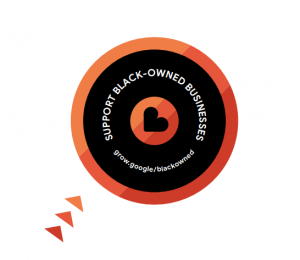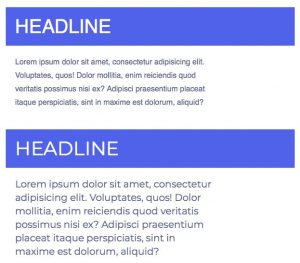What is social media recruitment and how can you organisation benefit from it? To find out we recently had a chat with Andy Headworth who is the author of “Social Media Recruitment, How to Successfully Integrate Social Media into Recruitment Strategy” as well as the Managing Director of Sirona Consulting. He’s also an award-winning blogger and speaker on the international recruiting conference circuit. You can listen to the podcast on iTunes and SoundCloud (embed below) or keep reading for an abridged transcript of our conversation. A longer version is available at Link Humans.
Why does social media need to be a part of a recruitment strategy?
Okay, to me there’s several aspects to this. The first thing that we’ve all seen over the last few years that existing recruitment methods are not being as effective as they could be to find the best talent. They’re still driving people to sites, they are still driving candidates or applicants through job boards, through LinkedIn adverts etc. But companies are not necessarily finding the calibre of the people they would like just from doing that method.
The other side to that is that we know from statistics that everyone has four to five social networks. Some a lot more, some a few less, which gives us all a digital footprint. That’s data that we can find as recruiters, that’s data that we can engage with, communicate with which is becoming a very big part of social media. The ability to talk, chat, engage with anybody you can find across multiple channels which makes it a much more powerful way of reaching, I’m going to use the word passive talent because that’s the buzz word but reaching the talent that you won’t necessarily get from just placing adverts and doing traditional recruitment methods.
Do you have a step by step guide to creating a social media in recruitment strategy?
Absolutely, I’ve got an eight stage process. Which has defined and I use this with clients regularly.
- Set Your Objectives. So, the first one is the most important thing, which is actually setting your objectives. So this is the thing that a lot of people don’t do. So they don’t actually know why they are doing it in the first place. So you and I being around this industry long enough to now and have the experience of the CEO that decides to do social media, because their son or daughter says they should do Twitter, we’ve both seen that. But so the first thing is, understand your objectives for each of the platforms that you’ve done your homework on and decide that you’re going to use. So LinkedIn is different to Twitter, it different to Facebook, is different to Pinterest so each will have a different objective.
- Define Your Audience. Number two then is, and probably combined with number one is to define your audience. So understand what your audience is, what you’re recruiting for, what they look like, where they are based, what sites they are on, create your persona and map that. And that takes some time but that needs to be done effectively to get some proper results in social.
- Choose Your Platforms. Then it’s the question of choosing your platforms. As I said in one, then you set your objectives for those platforms. So most people default and go straight to LinkedIn without even thinking about it, especially in the IT and tech space. A lot of those candidates are no longer active on those platforms, they’re on other ones. So get rid of the assumptions and open your mind.
- Select Your People. Number four, make sure you choose the right people in your team that are best suited to and motivated to be involved with your social activities, whether that’s sourcing on social, whether that’s the community managers, whether it’s the recruiting team that are actually doing the engagement and pushing the content out.
- Provide Training. They then need to be provided with very, very good training and understanding so that they are using the platforms correctly.
- Define Your Content Strategy. What’s the content that’s going to come out on those platforms, is it going to be your content is it going to be other people’s content, is it going to be created by the employees? Whatever that looks like and again with the objective to meet your objectives that you set in stage one so it might be branding, it might be attraction, it might be actually getting them to apply for jobs.
- Measurement. You have to measure what you are doing on a weekly or monthly basis. It needs to be tweaked, changed to maintain what you are trying to achieve.
- Monitoring. And on ongoing basis things need to be monitored and this is monitoring for your brand, your website, your people, campaigns and simple tools like Google Alerts and Mention are good starting for that. But a lot of the big brands now have Radian6 and Meltwater and all the other ones that are the big monitoring platforms in place.
So that’s the eight stages, each one in it’s one right can get quite complicated as you can appreciate but that the simple process that I use and it works.
What companies are doing it right?
- So there’s a few favourites of mine, Maersk I know you’ve covered them before, in Scandinavia I think are one of the best examples in the last few years of how to do it right. They’ve done it primarily on Facebook I think anyway and done it in a very interesting way. They used images and they went out they asked their own employees, what do they use? I know you’ve done the interview I think it’s about 85% of them used Facebook so they went to Facebook, they listened to their staff were. They’ve done a very, very good job.
- Spotify do some very interesting things around sourcing and engaging candidates using their playlists to engage candidates which I think is a really cute way of doing it.
- Boots the Chemist in the UK, traditional retailer has been for ages some of the stuff that Mark Rice and his team are doing with Boots around, engaging candidates. And we are talking about retail operatives and retail assistants throughout a long three or four month period via Twitter, via Facebook, via Pinterest, Instagram, images, videos. Really nice way of engaging the candidates and then when they are ready then may then we’ll see go in and try to track them as a particular candidate.
- KLM so they’ve always done some fantastic stuff around social and employer branding as well as recruiting. And we all chastised some of the big brands, sometimes like the big accountancy firms, and I won’t mention them, but all the ones we all well know [e.g. EY & Deloitte]. But they do some really funky stuff now around particular aimed at graduates. So they go after that marketplace and they use gamification, social media, they use all the different channels images, video, different attraction campaigns. So I think there’s lots of examples and they are the big ones that you see.
But there are a lot of companies that are smaller that are also doing it well. And we shouldn’t just look to the UK and Europe there are examples that I have come across writing the book all over the world that we can bring back to the UK and take bits of them and use them for our own purposes.
(233)





